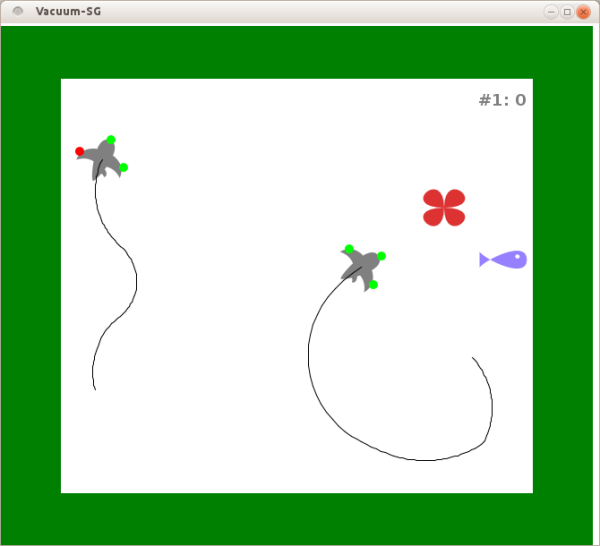VacuumSG Environment

Ressources :
sources
workspace for Eclipse
user manual (fr)
Description :

- each agent is executed in a different thread
- the visual system is not restricted to the center of the agent and can be place anywhere on the agent.
The user can control the simulation using the following interface:

The default environment is constructed according to a text file, and can be modified during the simulation. It is possible to define additional elements in addition to those that are proposed.
The simulated robot can move in all directions and rotate. It can feel tactile properties of elements in front of it, at its left and right, and behind it. It is also equipped with a ring of "leds" that allows to display its internal states.
The simulator also propose a polar rendering system that gives to the robot a visual field of 360° that is able to measure distance, and that can be used to simulate numerous types os sensors (camera, contact sensors, light sensors, distance sensors...). An example of such a simulated sensor is given in the basic version. This rendering system can be placed at every point of the robot, which allows, as example, the use of a stereoscopic system.

The basic version proposes two decisional systems as examples:
- Braitenberg.java : implements Valentino Braitenberg's famous vehicles. The robot uses preys as light sources.
- WallAvoider.java : a simple obstacle avoidance system: the robot moves forward while turning left, and turns right when it found an obstacle.